The Terrifying Beauty of Early Drag Racing Fire Suits
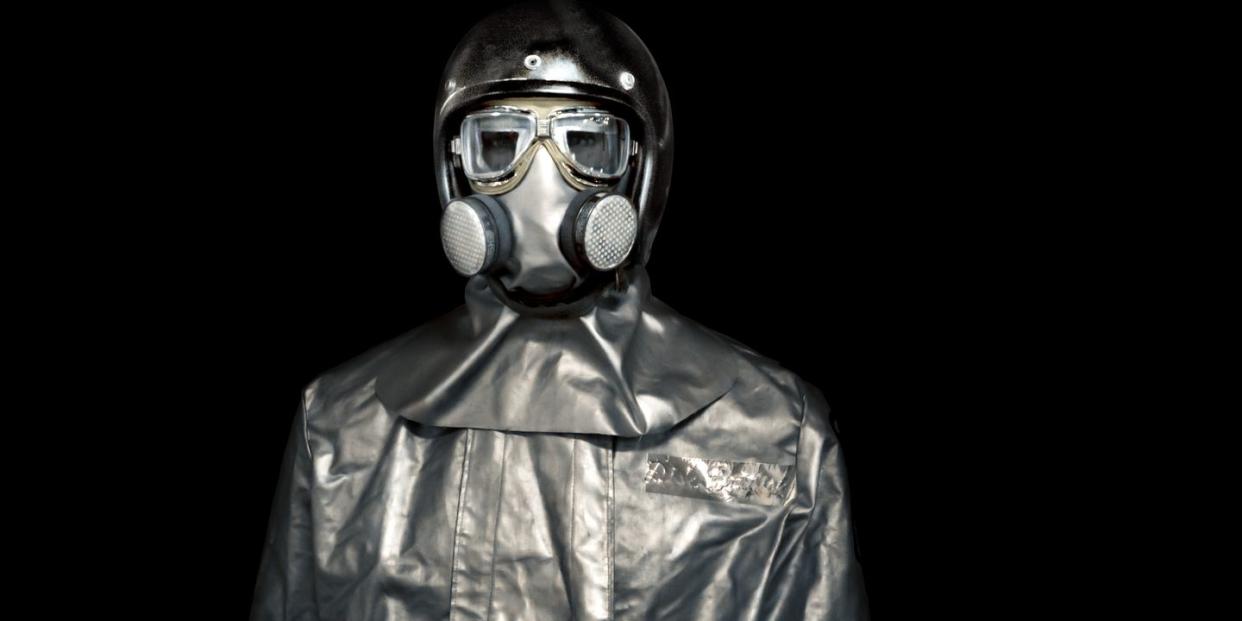
“I quit,” said Don Garlits in 1959. “I quit,” said Don "The Snake" Prudhomme in 1970. “I quit,” said Shirley Muldowney in 1973. It was not the tear-gas fumes of nitromethane exhaust that frightened them, nor the blurred vision of accelerating to 200 mph through a corridor of tire smoke on a ribbon of asphalt hemmed in by concrete walls. It was fire. The barely contained explosion of a nitro Hemi engine when it escapes containment turns a dragster into a flaming arrow. A Funny Car becomes a grenade with the pin pulled. A crash either kills you or it doesn’t. But a fire tortures you first, and that red lick of flame haunts many a driver’s dreams.
They didn’t quit drag racing, of course. They couldn’t, at least not for long. Their very heartbeats were tuned to the rhythm of a big, blown Chrysler engine. So what to do?
A leather jacket was the first solution. In the early years of sling-shot dragsters—so named because the pilot sat at the back in a little cup, looking like a pebble about to be launched—drivers wore T-shirts, open-faced helmets, and a pair of military-surplus, drop-down goggles, to keep the hot oil out of their eyes. “The engines all sprayed oil during a run,” says Prudhomme. “It would get on your goggles and make you feel like a real race-car driver.” If someone loved you, maybe they’d give you a leather jacket and a bandanna, so you’d have one more layer between you and the flames. “That jacket saved my life,” Garlits said of the leather his wife, Pat, asked him to wear, almost prophetically, a few weeks before the fire in 1959 that put him in the hospital for five weeks and nearly cost him the use of his hands. But leather was just a little extra skin. To survive the inevitable infernos, the drivers needed more.
It would be five years before fireproof suits became commonplace in NHRA. Jim Deist and Bill Simpson were innovators in racing who devoted their lives to improving safety in race cars of all kinds with parachutes, seat belts, and fire-resistant Nomex inspired by NASA space suits. Simpson went so far as to set himself on fire to prove the worth of his products. There's not a driver alive today who doesn't credit Simpson with saving them at some point in their racing careers—although there were improvements yet to come over the silver spaceman suits.“They slowed the fire, but you still baked like a potato inside them,” says Muldowney, whose signature look of big Jackie Kennedy sunglasses covers scars from that 1973 Funny-Car fire when her eyelids melted together. The goggles and breather masks that made the drivers look like they marched out of some steam-punk-themed nightmare didn’t do much more than keep the hot oil out of their eyelashes and give them a little fresh air at the starting line. “They were painter’s masks,” says Prudhomme. “I think it was Mongoose [Tom McEwen] who came up with that. Painters masks surrounded by the fireproof silver material. That was really space-age shit when we came up with it.”
These days, NHRA drivers are a mille-feuille of Nomex and carbon fiber. Contemporary Top-Fuel drivers wear 15-20 pounds of fireproof layers from their underpants to their driving boots. And still, we’d bet, they wake wide-eyed from dreams of fire.
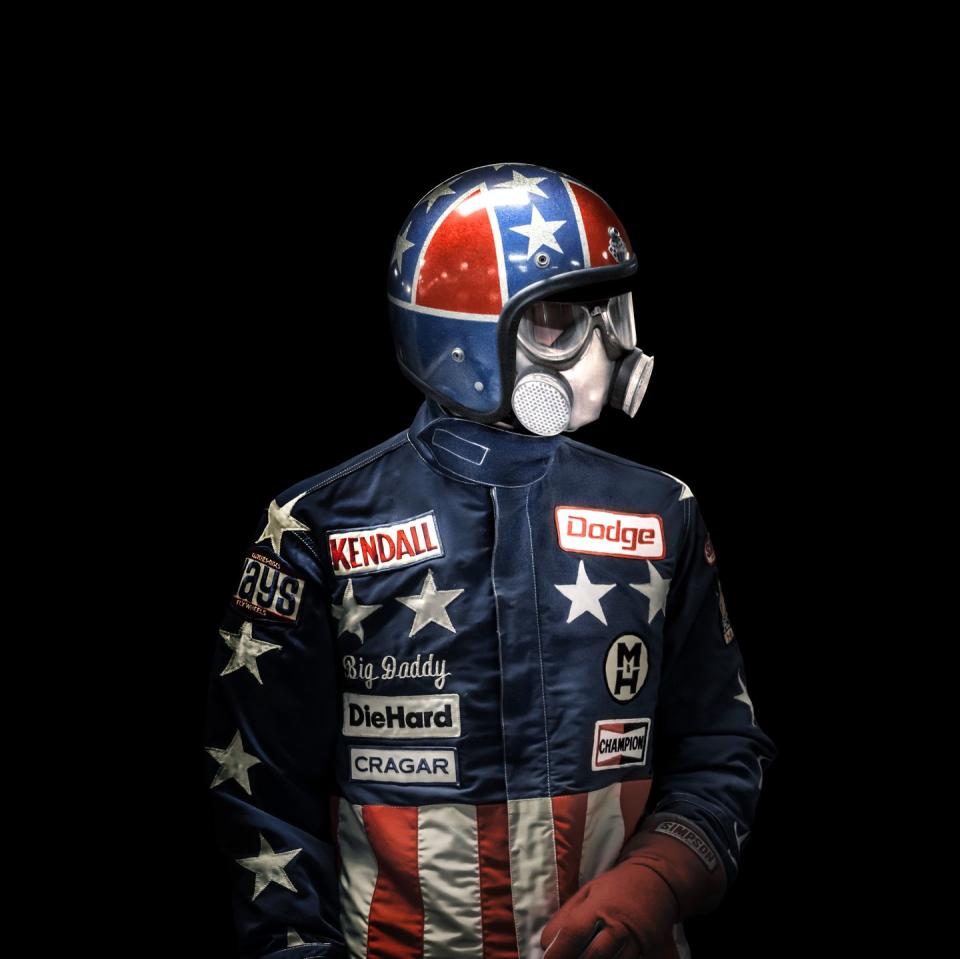
Don Garlits, 1971/'72.
After the adoption of Nomex made fire suits more flexible and easy to sew, racing suits became another way to showcase a driver’s individuality.
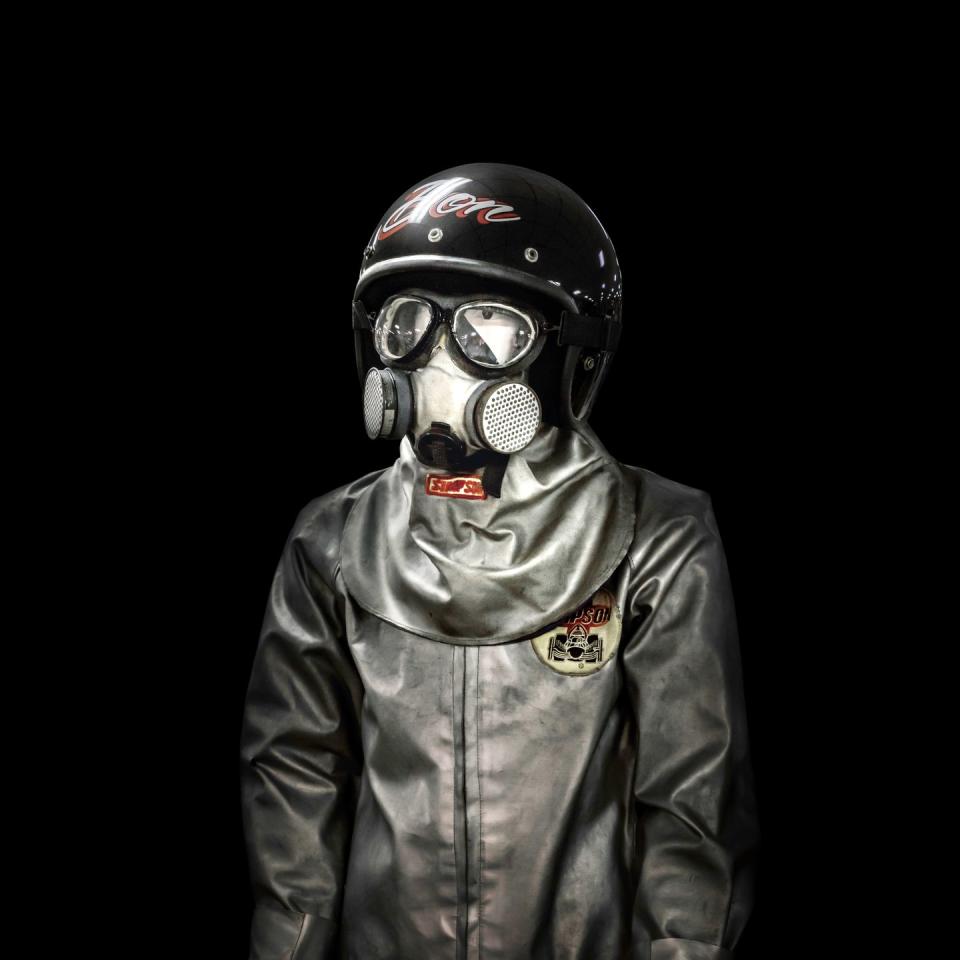
Don Garlits, 1965.
The first breather masks were just a hood and filters, then safety innovator Bill Simpson added a one-way valve to make exhaling easier.
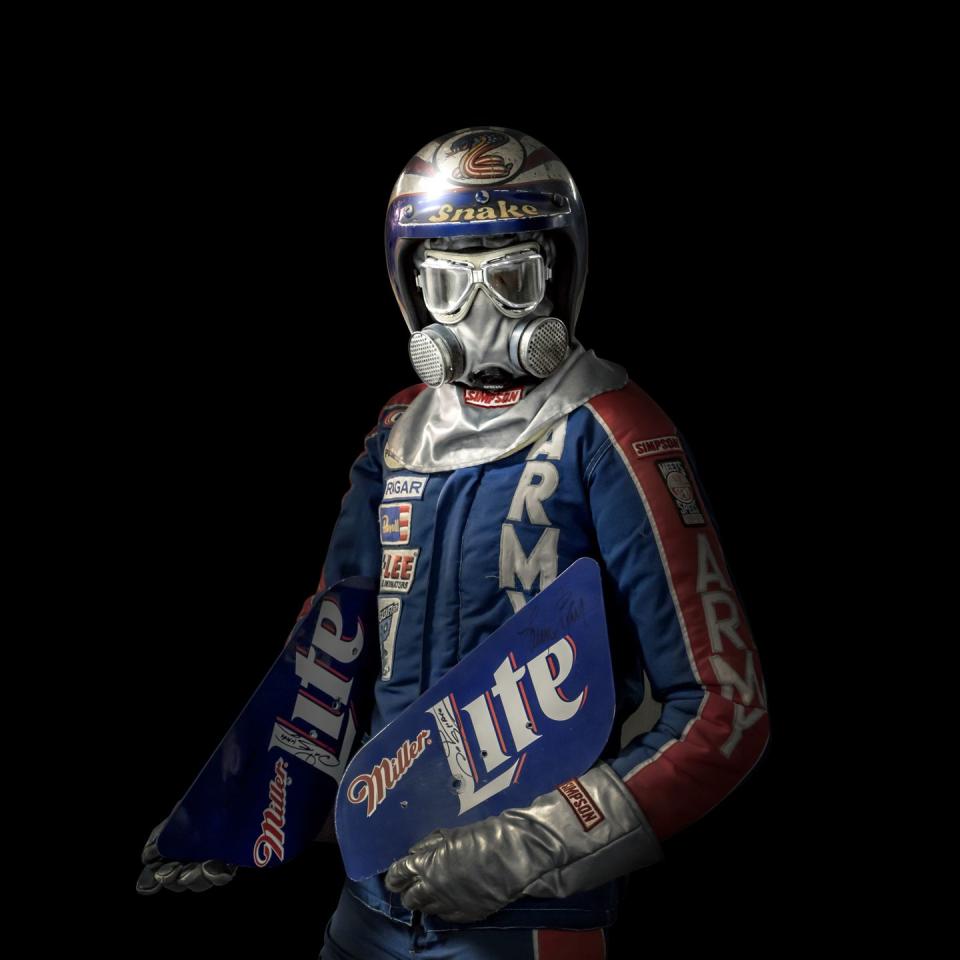
Don Prudhomme, 1973/'74.
An early adapter of safety equipment, The Snake credits Bill Simpson with saving his life many times over.
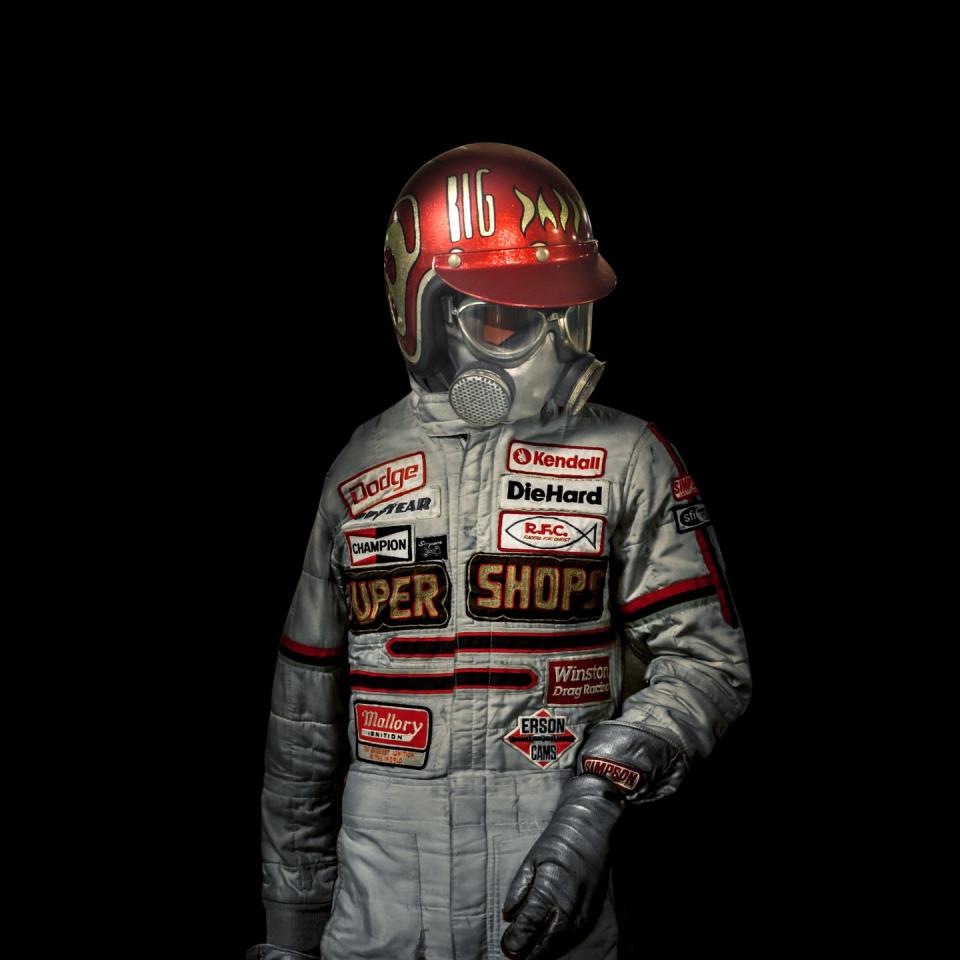
Don Garlits, 1985 (firesuit), 1966 (helmet and mask).
By the 1980s one-piece suits were becoming more popular than jacket and
pants sets.
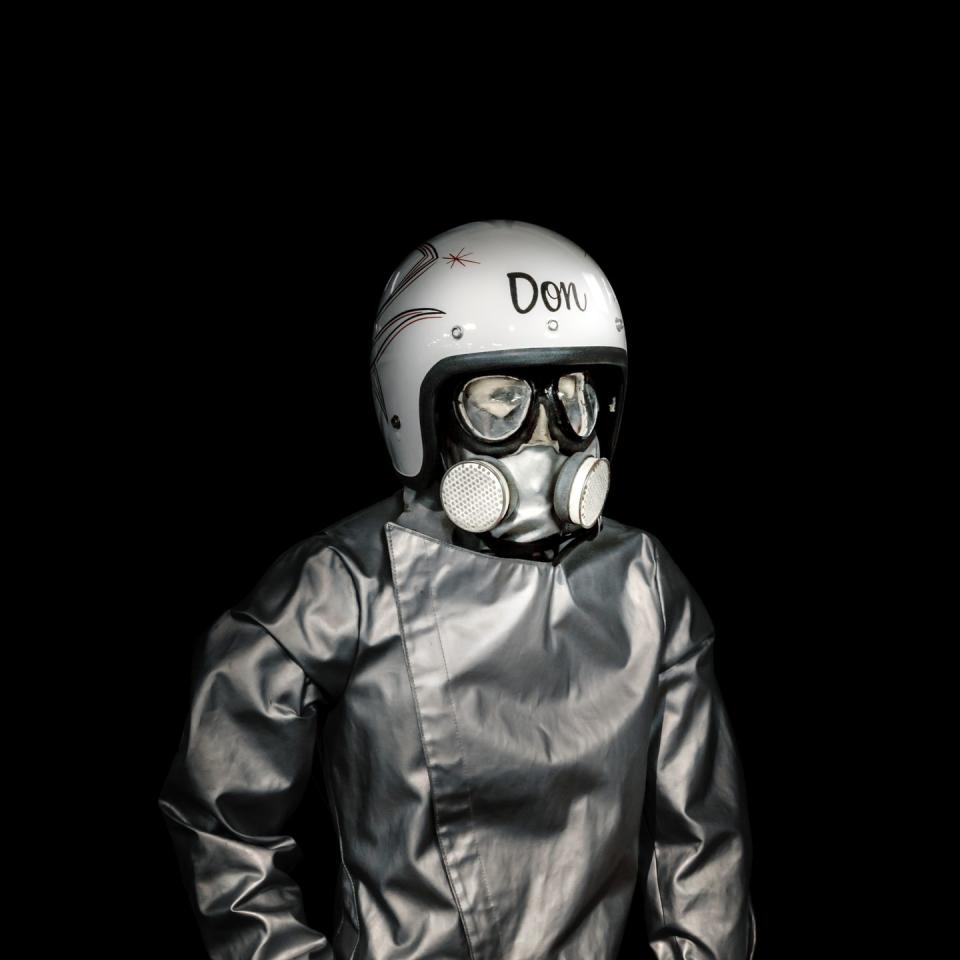
Don Garlits, 1960.
Early fire suits were aluminized-cotton. The silver material was to reflect heat.
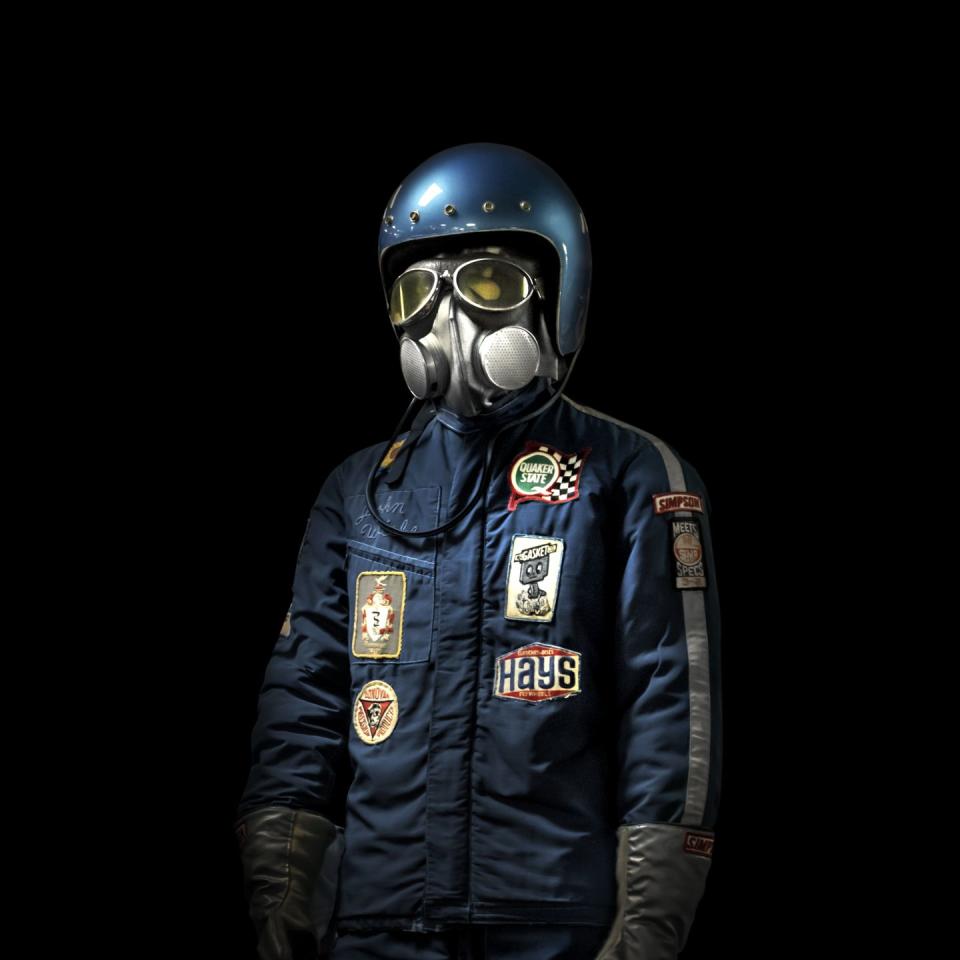
John Wiebe, 1970.
Wiebe is notable for being the last driver to be competitive in a front-engine dragster, the type notorious for enveloping the driver in a 200 mph ball of flame.
Note: All suits from The Don Garlits Museum of Drag Racing
You Might Also Like

